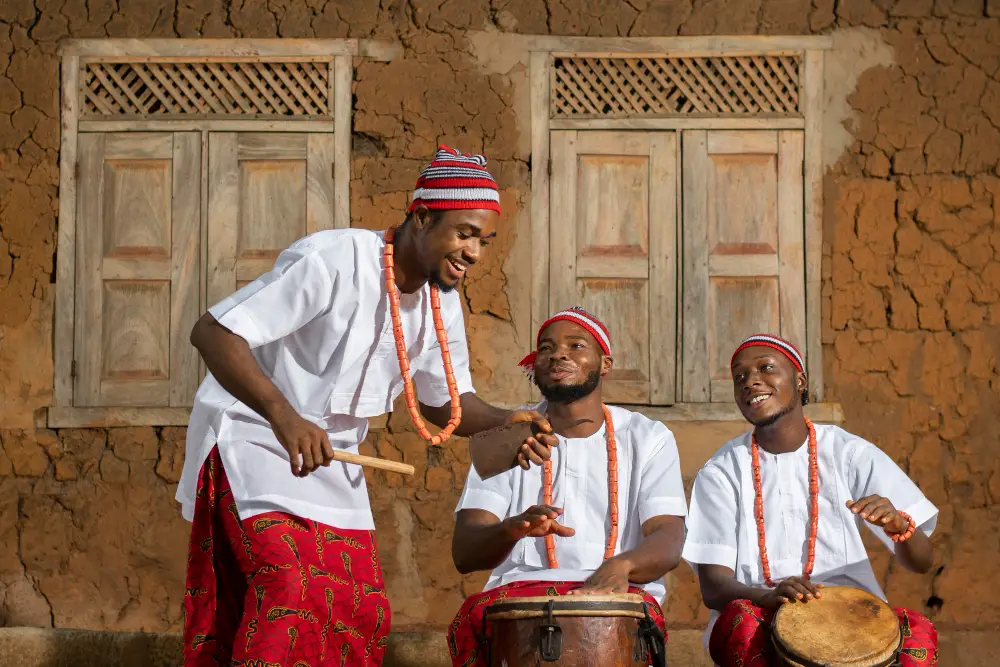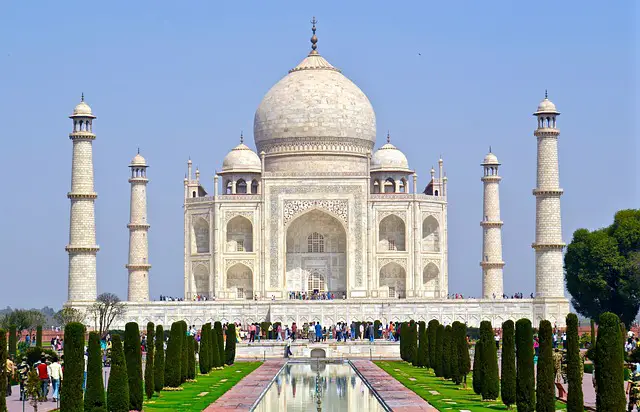Culture is the living expression of beliefs, practices, and values, while heritage encompasses inherited traditions, artifacts, and history.
TL;DR Culture Vs. Heritage
Culture refers to the shared beliefs, values, customs, behaviors, and artifacts that define a particular group of people. It encompasses everything from language and cuisine to art and music.
Heritage refers to the physical and intangible remnants of our past. It includes historic sites, monuments, traditions, rituals, knowledge systems, and natural landscapes. Heritage plays an essential role in preserving our collective memory and identity.
Culture

Culture refers to the intricate web of shared beliefs, customs, traditions, arts, language, and social norms that define a particular group. It shapes how individuals within that group perceive the world, interact with one another, and express themselves creatively.
Culture evolves over time through interactions, influences, and historical contexts, imparting a sense of belonging and identity. It can be expressed through rituals, cuisine, music, clothing, and more, reflecting the group’s history and collective experiences.
Culture not only shapes individuals’ lives but also serves as a bridge connecting generations, fostering a sense of unity while allowing for diversity and adaptation.
Heritage

Heritage encompasses the inheritance of tangible and intangible legacies from the past. It includes physical artifacts like architecture, art, and artifacts, as well as intangible elements like traditions, language, and historical narratives.
Heritage serves as a link between generations, preserving cultural, historical, and societal insights.
It fosters a sense of continuity and identity, helping societies understand their roots, values, and progress. Heritage sites and practices connect people with their ancestors, allowing them to appreciate the richness of their heritage while safeguarding it for future generations to learn from and cherish.
Culture Vs. Heritage – Key differences
| Aspect | Culture | Heritage |
|---|---|---|
| Definition | Shared beliefs, customs, traditions, etc. | Inherited tangible/intangible legacies |
| Components | Language, values, arts, customs, etc. | Artifacts, traditions, historical sites |
| Expression | Living and evolving | Preserved from the past |
| Evolution | Evolves over time through interactions | Passed down through generations |
| Identity | Shapes group's identity and interactions | Connects with roots and history |
| Influence | Affects daily lives and behaviors | Impacts societal understanding |
| Examples | Language, music, rituals, cuisine, etc. | Historical sites, artifacts, traditions |
| Purpose | Defines group, fosters unity | Preserves history, educates, inspires |
| Interaction | Interaction-driven | Interaction with the past |
| Adaptation | Adapts to changing contexts | Maintains historical authenticity |
Cultural Universals
- Language: A means of communication using symbols, sounds, and gestures.
- Family: A basic social unit typically involving parents and children, serving as a foundation for society.
- Art: Creative expressions that reflect cultural values, emotions, and aesthetics.
- Music: Sound patterns and rhythms used for communication and emotional expression.
- Beliefs: Shared ideas about the supernatural, origins, morality, and existence.
- Rituals: Structured actions or ceremonies for social, religious, or cultural purposes.
- Social Norms: Shared rules governing behavior, promoting social cohesion and order.
- Tools: Objects and techniques used to accomplish tasks and adapt to the environment.
- Education: Passing on knowledge, skills, and values from one generation to another.
- Food: Nourishment and sustenance, often prepared and consumed in culturally specific ways.
These cultural universals are present in varying forms across societies, showcasing common aspects of human existence and interaction.
What are sub cultures?
Subcultures are fascinating and diverse microcosms that exist within larger societies. They represent a unique way of life, distinct from the mainstream culture. These subcultures can be based on various factors such as shared interests, beliefs, values, or even fashion styles.
Key features of subcultures:
- Distinct Identity: Subcultures have their own norms, styles, and symbols that differentiate them from the mainstream culture.
- Shared Beliefs: Members of a subculture often hold common beliefs or values that bind them together.
- Shared Practices: Subcultures engage in specific activities, rituals, or behaviors that reinforce their identity.
- Resistance or Deviance: Subcultures might resist or challenge aspects of the dominant culture, sometimes adopting countercultural viewpoints.
- Social Cohesion: Subcultures provide a sense of belonging and community for individuals who may feel marginalized by the dominant culture.
Examples of subcultures include punk rockers, gamers, hippies, goths, hip-hop enthusiasts, skateboarders, and various religious or political groups. Subcultures contribute to the diversity and complexity of a society’s cultural landscape.
Tangible Heritage
Tangible heritage refers to the physical artifacts and structures that have been passed down through generations, representing a society’s history and identity. It encompasses tangible objects such as buildings, monuments, artwork, artifacts, documents, and even landscapes. Such as:
- Historical Sites
- Artifacts
- Museums
- Monuments
- Architectural Heritage
- Cultural Landscapes
- Cultural Practices
Intangible Heritage
Intangible Heritage is a fascinating aspect of our cultural fabric that often goes unnoticed. Unlike tangible heritage, which includes physical objects like buildings or artifacts, intangible heritage refers to the practices, expressions, knowledge, and skills that are passed down from generation to generation.
- Oral Traditions: Folktales, legends, proverbs, storytelling.
- Traditional Music: Unique melodies, instruments, cultural ties.
- Performing Arts: Theatrical performances, dances, rituals.
- Language and Dialects: Reflecting cultural identities.
- Festivals and Celebrations: Rituals, customs, communal events.
- Traditional Crafts: Artisanal skills, cultural craftsmanship.
- Culinary Traditions: Recipes, cooking methods, food practices.
- Traditional Medicine: Indigenous healing, holistic health.
- Rituals and Ceremonies: Sacred practices, life events.
- Knowledge Systems: Indigenous knowledge, cosmologies.
Natural Heritage
Natural heritage refers to the physical, biological, and geological features of the environment that hold cultural, scientific, aesthetic, or ecological value.
It encompasses landscapes, ecosystems, species, and geological formations that contribute to the natural diversity and heritage of a region or the planet.
Examples of natural heritage include:
- National Parks
- Coral Reefs
- Mountain Ranges
- Wetlands
- Deserts
- Volcanoes
- Caves
- Islands
- Rivers and Lakes
- Glaciers
Image Credits
Featured Image By – Dave Parkinson from Pixabay
Image 1 By – Freepic








